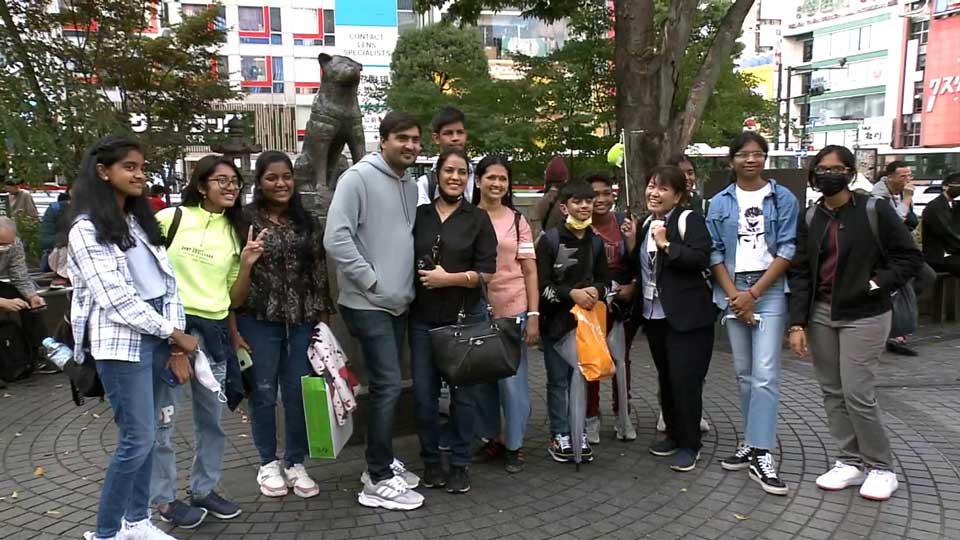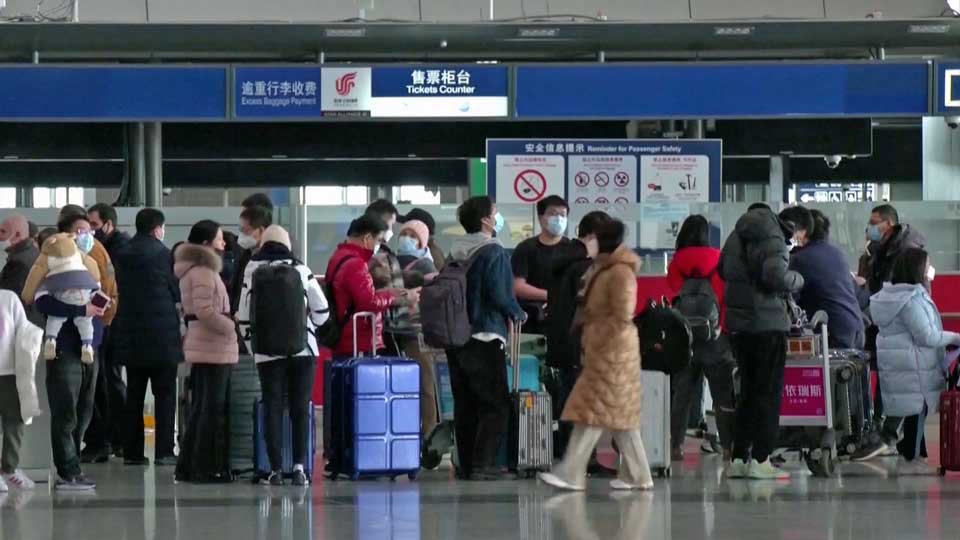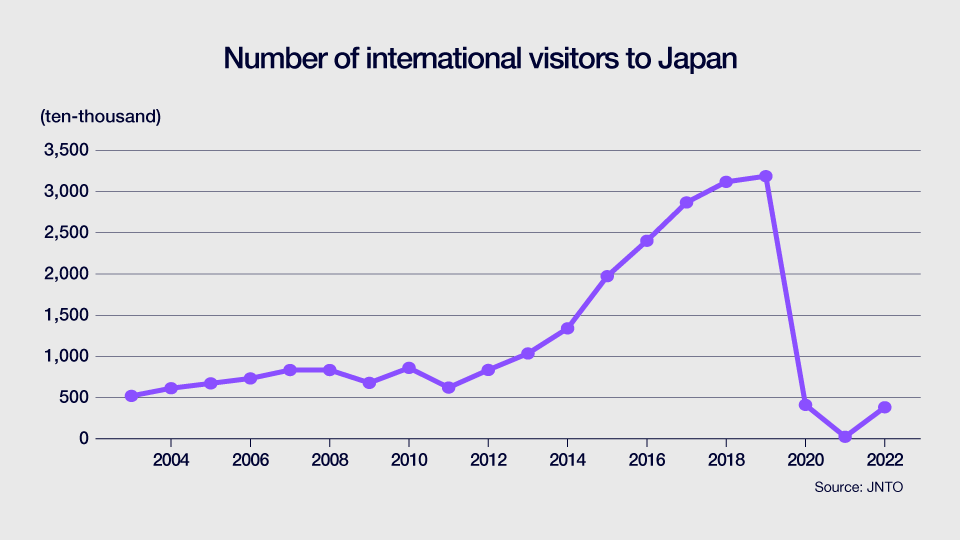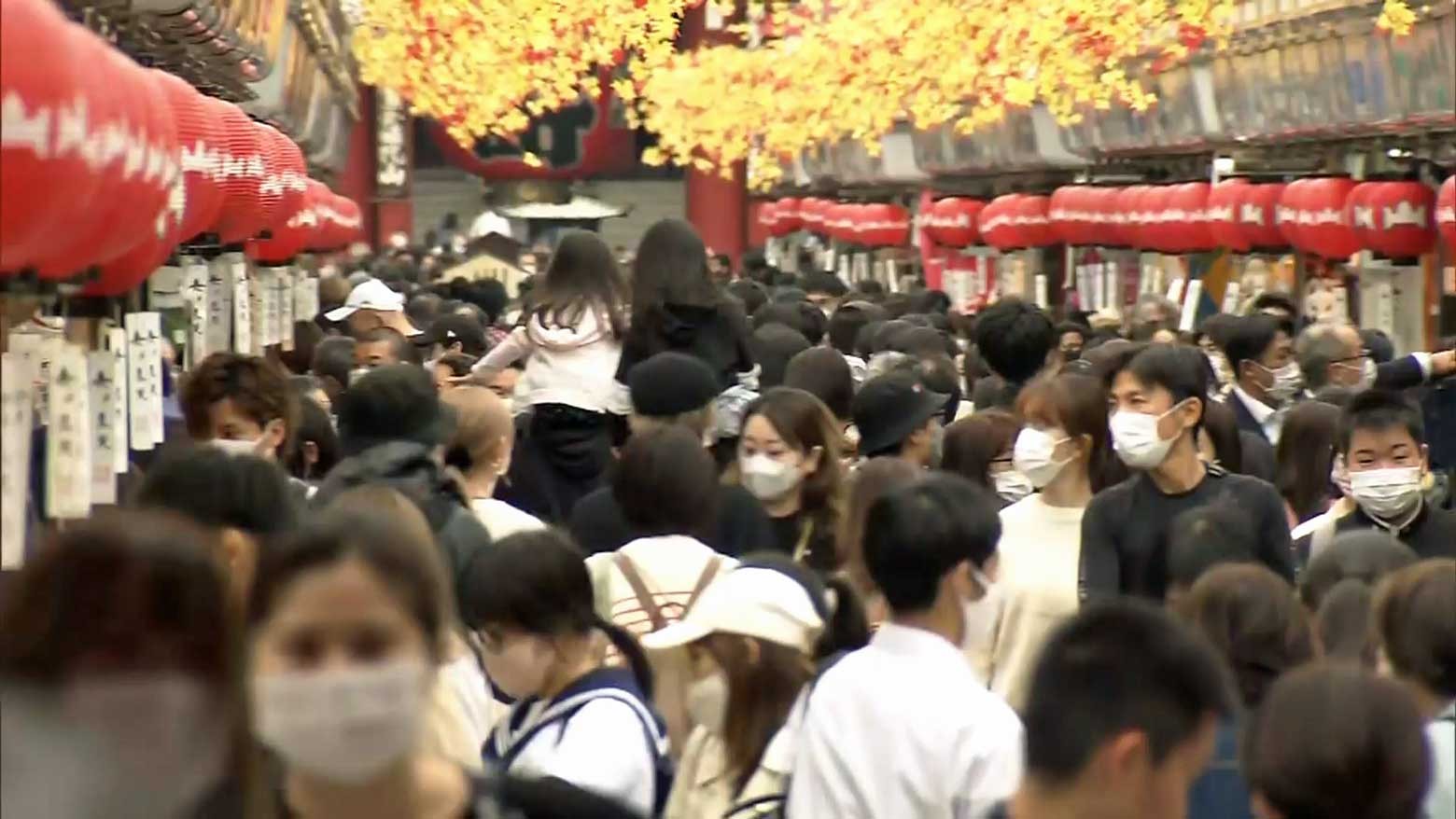The Japan National Tourism Organization announced on January 18 that 3,831,900 overseas travelers arrived in 2022. That's more than 15 times higher than the year before.
Almost 80 percent came from September onward, after the Japanese government drastically eased its border controls.
Most were from South Korea, at just over a million or nearly a third of the total. Visitors from Taiwan were second, at over 330,000, followed by Americans and Vietnamese.
Still, the total was only about 12 percent of the figure for 2019, before the pandemic.

Absence of Chinese tourists
The chief of the Japan Tourism Agency, Wada Koichi, welcomes the increase, saying the number has rebounded strongly due to both the eased border controls and the weak yen.
But a full recovery for the tourism industry remains out of reach for now, as Chinese travelers have been slow to return.
China has been a vital market for Japan's tourism industry, accounting for 30 percent of all visitors in 2019. But last year, only 189,000 Chinese travelers arrived.
The Chinese government ended its strict zero-COVID policy and lifted its anti-coronavirus measures on January 8. It is resuming group tours to 20 countries from February 6, but not to Japan.
Japan has tightened temporary border controls for travelers arriving from China since early January in response to the consequent surge in COVID infections there. China reacted sharply to the new measures, calling them discriminatory. Beijing also suspended issuing visas to Japanese citizens for a period.

Industry unprepared
And there's a structural problem within Japan – some businesses in the hospitality industry say they have not been able to catch up with the fast-growing demand due to labor shortages.
"We have been receiving many bookings since September. But sadly, we have to turn some of them down because we don't have the staff," says Fujiwara Hidenori, the head of a cultural-experience company in Tokyo's Asakusa.
Fujiwara says the firm lost many employees in the pandemic when there simply weren't any customers. Since the company's services require special skills, such as putting on traditional kimono, he says it takes almost a year to train new staff to the right standard.
More than 75 percent of hotels and restaurants are suffering from a shortage of staff, according to a survey conducted by Teikoku Databank in October.
Digital transformation is expected to help improve the situation. Some businesses in the industry have already implemented new technologies, such as automation.
"High-quality services cannot be provided without manpower, especially in our case," Fujiwara says. As a customer-centric industry, he says, it always requires the human touch.

Government gearing up
The Japan Research Institute, a private-sector think tank, predicts a big leap in the number of overseas visitors to Japan this year. It estimates that more than 20 million foreign travelers will visit the country and that the number of Chinese tourists will rebound after the summer.
It also calculates that those travelers will spend 3.1 trillion yen, or roughly 23 billion dollars, expanding the gross domestic product by around 0.4 percent in nominal terms. But it says this will happen only when visitors from China return en masse.
In 2019, Japan recorded inbound tourism spending of more than 4.8 trillion yen. Prime Minister Kishida Fumio wants to get back to that level as soon as possible. Kishida said at a meeting in October that he aims to set an annual target of 5 trillion yen.
To that end, a tourism promotion plan is now under review, to be compiled by the end of this fiscal year in March.

